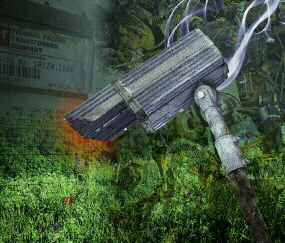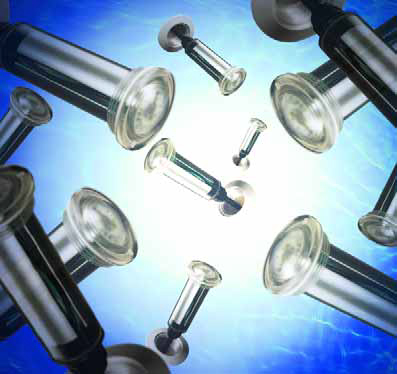Outdoor Living, Fire Features, Amenities & Lighting
Call it human nature, free-market economics, the profit motive or whatever – the fact of the matter is that too many landscape lighting installers rely on low-cost products made with low-grade materials. Obviously, they do it to cut down costs either to squeeze more profit out of each job or to bring the price down to the level required to get clients to sign on the dotted line. So rather than reduce the number of fixtures used on a project or even turn down a project altogether, they’re clearly willing to win a job by using equipment that has no chance of lasting more than a
It has always bothered me: Why do we take devices that draw electrical current and install them in aquatic environments where humans get in the water? Even if precautions are taken, isn’t this risky business? To be sure, suppliers have come up with all sorts of measures designed to protect bathers from any potential hazard, and I have nothing but praise for the ingenuity they’ve displayed in surrounding their products with safeguards that minimize concern. But based on my own observations and experience, I must say that
For more than 10 years now, outdoor rooms have been growing steadily in both popularity and complexity. That’s great, because it enables designers – architects, landscape architects, landscape designers and pool builders alike – to bring interiors outside and provide living spaces where activities previously associated strictly with indoor spaces can move comfortably into the great outdoors. It’s a fantastic way to expand living areas and create useful spaces while also adding entirely new types of experiences to the lives of homeowners. Among this trend’s many implications is that it has challenged landscape lighting designers to think in all-new ways about how we light exterior spaces. For starters, we need to be aware that most homeowners will enjoy these spaces exclusively after dark – and also be conscious of the fact that these environments require much more complicated lighting schemes than classic suburban patios ever did. The differences are so profound that I believe lighting designers need to talk to clients in new ways that
If there’s ever been such a thing as a match made in heaven, swimming pools and landscape lighting lay a strong claim to that perfection. Separately, they take little-used spaces and transform them to all-day hubs of activity and sources of constant beauty. Together, however, the magic starts, with pools and landscape lighting systems accentuating each other’s virtues in ways that are tough to quantify or adequately describe. To landscape lighting designers and installers, pools offer a
I’m always surprised when I run into clients or prospects who don’t appreciate or fully accept the fact that landscape-lighting systems require routine maintenance. These are people who easily recognize the need for upkeep when it comes to their swimming pools or landscapes, but this perception simply doesn’t extend to the lighting systems that frequently go along with them. I suspect this is so because dealing with lighting inside a home is so simple – basically just a matter of changing burned out bulbs as the need arises. Some also believe that landscape light bulbs should and will last forever, which is
It’s often hard to tell exactly when you begin a career as an artist. As children, both of us loved to play with clay – but that’s been true of countless other children the world over for untold generations. And it really was just fun for us, but now when we look back on those days, we also see that, even then, we’d started on the road to our current calling. It helped, of course, that we were raised in a family of artists. Both of our parents drew and painted, and our father, James Doolin, was respected in the art world. But it was our mother, Leslie Doolin, who started it all for us professionally when she decided to paint on tile: Eventually we joined her in what was to become
From my perspective on the design and installation side, I see bringing landscape lighting to a property as a process that includes careful planning and execution as we compose the different scenes and lighting elements; count and select fixtures; lay out the power-distribution system; install everything properly; and, finally, fine-tune it all before turning things over to our clients. Looking at it from the other side, it’s been my observation that clients approach these projects with an equivalent level of deliberation: Even among relatively affluent clients, landscape lighting represents a significant
In the landscape lighting business, we often hear complaints about glare and get lots of questions about how to bring it under control. In some cases, it’s a minor annoyance, but in others, some clients are so sensitive to the discomfort it can produce that it ruins entire lighting designs for them. So what exactly is “glare”? I define it as light transmitted directly from a source into an onlooker’s eyes (either directly or indirectly) in such a way that it’s a nuisance. Beyond the squinting
It's not an uncommon goal: Nearly all of the homeowners I speak with about lighting designs want to be able to move safely and comfortably around their properties at night. Perhaps more important, they want guests and others unfamiliar with those spaces to be able to do the same without anyone being concerned about suffering an injury as a result of a misstep brought on by darkness or glare. The interesting this is, some of my clients need convincing when it comes to path or step lighting: Even if they see






















